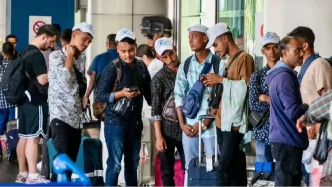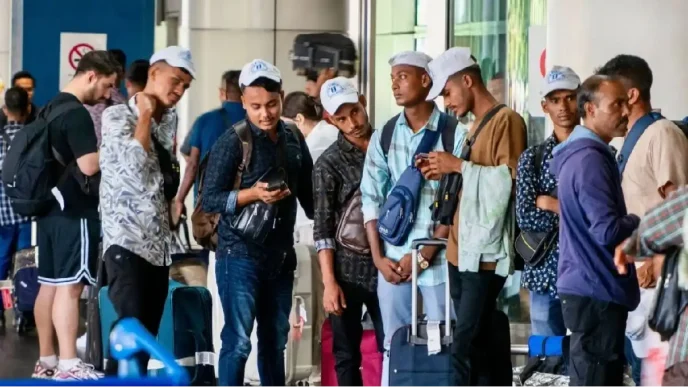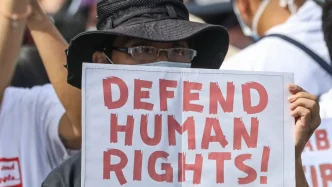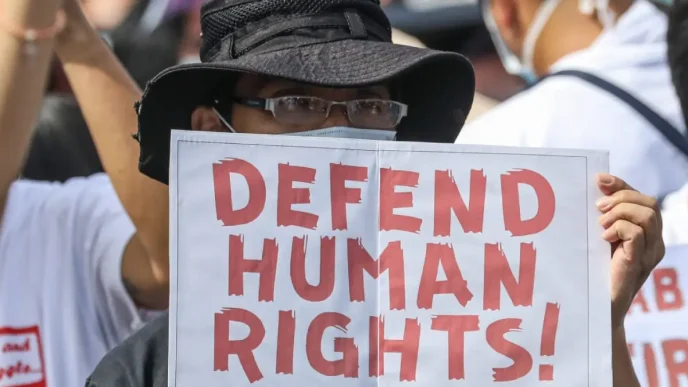A month after its much-publicised launch on 10 February, President Prabowo Subianto’s ambitious free birthday health screening programme in Indonesia is grappling with tepid public response and logistical hurdles. Aimed at reaching 100 million citizens by the end of 2025, the initiative has so far attracted only around 300,000 participants—a fraction of its target—prompting concerns about its feasibility and execution.
The programme, designed to provide free health check-ups to children under six and adults over 18, seeks to address a critical gap in public health. Official data from the 2023 Indonesia Health Survey reveals that nearly 40% of the country’s 280 million people have never undergone basic screening for non-communicable diseases (NCDs) such as heart disease, stroke, and diabetes, which remain the leading causes of death nationwide. By offering age- and gender-specific screenings, the government hopes to boost health awareness and early detection. Yet, despite its noble intentions, the initiative is faltering under the weight of public apathy and systemic challenges.
A Slow Start Across the Archipelago
From Bali to North Sumatra, reports of low participation paint a troubling picture. In Bali, a popular tourist destination with a population of over 4 million, only 4,000 people have enrolled across 120 community health centres, known as Puskesmas. In North Sumatra, while over 12,000 registered via the Satu Sehat Mobile app, a mere 10,000 followed through with screenings. Nationwide, the numbers remain dismal, with Health Ministry spokesperson Widyawati confirming that just 300,000 have signed up so far.
At the heart of the issue lies a complex registration process that appears to alienate many potential beneficiaries. Citizens must activate their National Health Insurance membership and register through the Satu Sehat app at least a month before their birthday to access the free check-ups at Puskesmas or partnered clinics. For many Indonesians, particularly older citizens or those in rural areas with limited digital literacy, this requirement poses a significant barrier.
In Makassar, South Sulawesi, Sophia Qadarsih, head of Jongaya Puskesmas, noted that only 52 people had signed up since the programme’s launch, compared to over 1,800 served through other health initiatives in February alone. “I think because this is a new programme, the public hasn’t responded to it yet,” she told local media on Friday. A 54-year-old visitor to the centre, Hasnawati, echoed this sentiment, expressing reluctance to navigate the smartphone-based registration. “I came for another NCD check-up programme, which is also free. I only need to bring my ID card, and I get my medicine afterwards,” she said.
Similar stories emerge from Palembang, South Sumatra, where a 39-year-old street vendor named Lisa was unaware of the programme until recently. “It would be great if I could get the free check-up since my birthday is in early February, but I don’t know how to get more information or sign up,” she admitted. Despite efforts by local health officials to disseminate information through text messages and direct invitations, turnout remains low. Erfiana Umar, head of Merdeka Puskesmas in Palembang, lamented, “Our facilities are complete. The only problem is that people just aren’t showing up.”
Logistical Woes Compound the Problem
Beyond public disengagement, the programme faces significant operational challenges. Several clinics report shortages of single-use medical supplies and inadequate manpower, hampering their ability to deliver screenings according to national guidelines. In Medan, North Sumatra, Elsa Dodolang from the city’s Health Agency highlighted how insufficient stocks have disrupted services at multiple centres.
These issues are not isolated. Ekasakti Octohariyanto, secretary general of the Indonesian Puskesmas Association (APKESMI), told lawmakers last week that a survey of 1,095 Puskesmas across 38 provinces revealed widespread shortages. With over 10,000 Puskesmas nationwide tasked with implementing the programme, such constraints could derail its rollout. “Medical supplies in Puskesmas remain very limited, and this could really hinder the implementation,” Ekasakti warned.
The scale of the challenge is daunting. Indonesia’s decentralised healthcare system, spread across thousands of islands with varying levels of infrastructure, has long struggled with resource allocation. While urban centres like Jakarta may have better-equipped facilities, rural and remote areas often lack basic supplies and trained personnel. If the programme is to achieve its ambitious targets—covering 100 million this year and all 280 million by the end of Prabowo’s presidency in 2029—these systemic gaps must be addressed urgently.
Government Response and Future Plans
Acknowledging the slow start, the Health Ministry is exploring ways to boost participation. Spokesperson Widyawati outlined plans for enhanced community outreach, drawing inspiration from the successful COVID-19 vaccination campaign. “It will be like what we did with the vaccination drive, when there was a lot of initiative, even from people outside of the government,” she said last week. Pilot projects involving private sector partners and mass organisations are set to launch in Jakarta in the coming weeks, though details remain sparse.
Simplifying the registration process could also help. Digital literacy remains a significant hurdle in a country where smartphone penetration, while growing, is unevenly distributed across socio-economic and geographic lines. Offering alternative registration methods—such as in-person sign-ups at Puskesmas or through community leaders—could make the programme more accessible to those unfamiliar with or unable to use the Satu Sehat app.
Moreover, the government must prioritise supply chain improvements to ensure Puskesmas are adequately stocked. Partnerships with private entities, as hinted at by Widyawati, could alleviate some of these pressures, but they must be carefully managed to avoid disparities in service delivery between wealthier and poorer regions.
A Broader Health Policy Context
President Prabowo Subianto, who took office in October 2024, has positioned healthcare reform as a cornerstone of his administration. The free birthday screening programme, with a reported budget of $183 million, is part of a broader push to improve health outcomes in a nation where NCDs account for a significant burden of disease. By focusing on prevention and early detection, the initiative aligns with global health priorities, including the World Health Organization’s emphasis on tackling non-communicable diseases through accessible primary care.
However, the programme’s rocky start raises questions about the government’s capacity to execute large-scale public health initiatives. Prabowo’s administration inherited a healthcare system strained by underfunding, uneven infrastructure, and the lingering effects of the COVID-19 pandemic, which exposed deep vulnerabilities in Indonesia’s medical readiness. While the free screening programme is a step in the right direction, its success hinges on addressing both public engagement and logistical bottlenecks.
Critics have also pointed to a lack of adequate public consultation before the programme’s rollout. Health policy experts argue that involving community leaders and local health workers in the planning phase could have helped tailor the initiative to regional needs and cultural contexts. Without such input, the programme risks being perceived as a top-down mandate disconnected from the realities of ordinary Indonesians.
What Lies Ahead?
The free birthday health screening programme is a test of President Prabowo’s commitment to transforming Indonesia’s public health landscape. If successful, it could set a precedent for proactive, population-wide health interventions in a country long plagued by preventable diseases. But with participation rates languishing and logistical challenges mounting, the path forward is far from certain.
For now, the government’s planned pilot projects and outreach campaigns offer a glimmer of hope. If these efforts can bridge the gap between policy intent and public response, the programme may yet gain traction. However, without addressing the digital divide, supply shortages, and manpower constraints, the target of screening 100 million people by year’s end seems increasingly out of reach.
As Indonesia navigates these challenges, the stakes are high. A healthier population could drive economic growth, reduce healthcare costs, and improve quality of life across the archipelago. But achieving this vision will require more than ambition—it demands meticulous planning, robust infrastructure, and a willingness to adapt to the diverse needs of 280 million people. For President Prabowo, the coming months will be a critical test of whether his flagship health initiative can deliver on its transformative promise.














